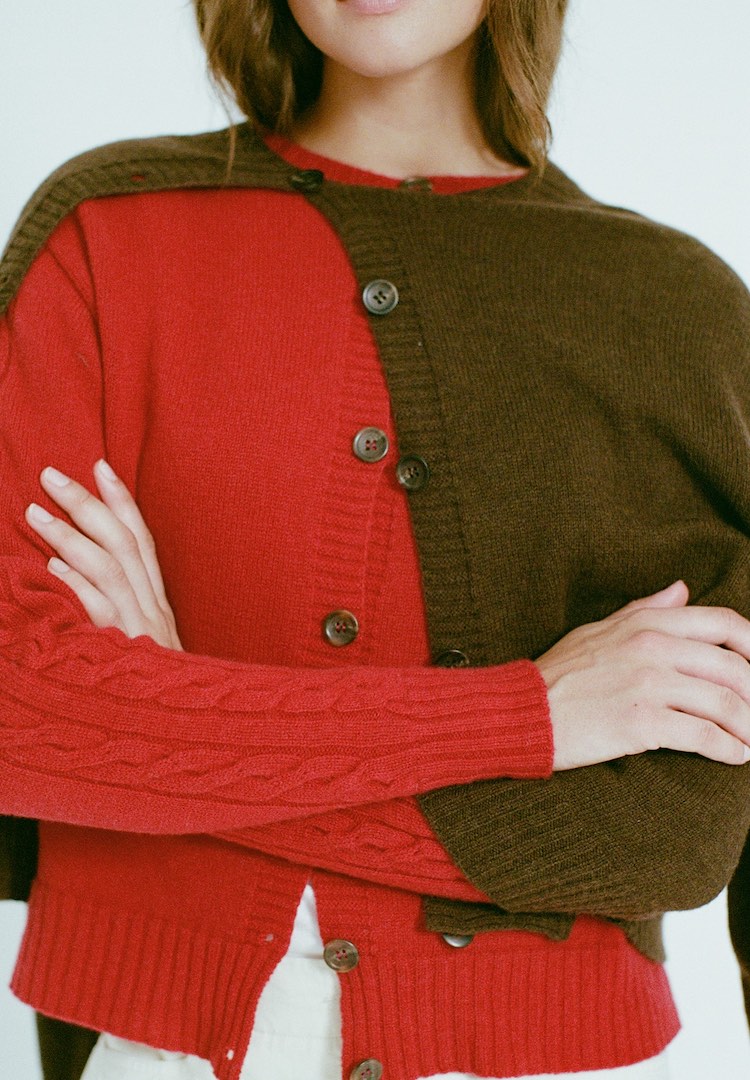
When I see expensive knitwear on hangers at shops, a little part of me dies inside. Surely we all know by now that you never hang a knitted jumper.
Having worked at a fashion label in my early twenties, I often saw firsthand what happens when you don’t take care of your clothes. People would inevitably come in, asking for advice about sagging or shrunken pieces, looking for a solution to (sometimes) irreparable damage. Through it all, I learnt one very valuable lesson: your knits will keep the score. Treat them well and they’ll reward you by lasting for years, but treat them badly and it will show.
For more pre-loved fashion style, advice and stories, head to our Pre-Loved section.
Granted, there is a lot of noise to cut through when it comes to knitwear best practice. Exactly how often should we be washing our knits? Does it depend on the material? And importantly, what’s the deal with pilling?
As we descend further into winter and reaching for our knitwear becomes a more common occurrence, there’s no better time like the present to learn how to take care of your knits. And who better to ask than the people designing them? For some expert advice, I turned to Saige Coleman, founder and designer of Sydney-based label Saiegy, and Anna Woodruff, founder and designer of New Zealand label Francie. Given that both brands specialise in locally made knitwear, Saige and Anna come armed with a wealth of knowledge.
View this post on Instagram
Knitwear mistakes to avoid
Don’t ignore wash instructions
The most important tip, according to both Anna and Saige, is to follow the washing instructions on your knit. “We have so many sad folks in our email inbox who have tried to put their knits in the washing machine and ended up with a tiny knit – it’s just not worth it,” Anna tells me.
Saige agrees. “[Never throw] a woollen knit in with your regular load of washing,” she adds. “Always wash in cold water and by hand, unless you want your knit to shrink into a shell of its former self.”
Don’t over-wash your knits
Another common mistake Saige sees and admits to being guilty of herself, is over-washing. This can not only lead to pilling but can cause the garment to loose shape over time. Natural fibres like wool and Merino are naturally odour and sweat resistant. More often than not, you can get away with a spot clean or simply airing out items by turning them inside out.
Fold, don’t hang
Both designers are also quick to emphasise the importance of storing knitwear properly. “Depending on the fibre, hanging your knit can sometimes make it stretch and sag, often leaving the garment looking like it was made for a long limbed giant,” Saige says. By folding garments in instead, they’re far more likely to keep their shape.
Be wary of snagging
“When it comes to more delicate, fine knits like the ones I design, also be vigilant of snagging, which is hard, because it can happen in a single careless moment,” Saige says. “Try to avoid sharp jewellery, rough textured bags, or brushing up against abrasive surfaces like brick walls and Velcro (the silent killer of knits).”
Tips for making your knitwear last
Use the right detergents
When it comes to detergents and stain removers, Anna’s advice is to keep it simple. Instead of a harsh, bleach-based product, she recommends using a simple bar of Sard soap instead. However, if you are using a machine, Saige suggests trying out a wool-specific detergent.
Mend any holes straight away
Whether you’re a seamstress or not, Anna suggests jumping on any holes early on and having a go at fixing them yourself. “Mending it badly and quickly, is better than putting it off, as it stops the hole from getting bigger,” she says. “Even a ‘bad’ mend can look really charming in my opinion, and you can always undo it and mend it more neatly again in future.”
Customise your fit
One bonus tip forgetting more out of your knits is to customise the fit. According to Anna, you can hand-wash or steam your garment and then allow it to dry in the shape you want. “This is such a handy trick if you want the sleeve a bit longer, or a the neck has stretched and you need to reset it.”
View this post on Instagram
How to wash your knitwear without ruining it
For Saige, the correct way to wash your knitwear depends on the fibre. “More forgiving fibres such as acrylic and cotton knits go straight into a normal cycle and more delicate natural fibres like wool and cashmere get special one on one alone time with me.”
However, Anna’s preference is skip the washing machine altogether. “All knits will last longer and look better if we avoid using the washing machine and choose to steam, air or cool hand wash instead,” she tells me.
If you’re ever in doubt or pressed for time, both designers suggest looking at the care tag inside the garment. There, you’ll find instructions, tips and the label’s suggested practice for taking care of your knit.
Does your knitwear’s lifespan depend on the fabric?
“Ideally, your knitwear should last forever,” Saige says. “I have vintage knits from the ’80s that have stood the test of time just by being cared for properly and following all the little rules I’ve mentioned above. And then there are pieces that didn’t even survive one wear, usually because I foolishly chucked them into a warm cycle without thinking. The longevity really comes down to the materials and how you treat them. A little extra care goes a long way.”
Anna agrees. “If you buy a polyester knit, yes it will last quite literally forever but it will look pretty average very quickly. So when we buy a natural fibre knit the fact that it will break down is a good thing.” she adds.
“How well it wears is is a combination of the quality of the knit and the yarn – you tend to get what you pay for here – and how we look after it.”
How to deal with pilling
Pilling is often treated as a sign of a poorly made or poorly treated garment. But according to Anna, that isn’t always the case. “[Pilling] is also something that can naturally occur, even with some high quality yarns,” she tells me.
When we opt for oversized silhouettes, the extra fabric, along with loosely knitted textured pieces, can create more friction and come with a greater risk of pilling. If this does occur, Anna’s first suggestion is to hand wash it. “Sometimes a piece is just shedding some extra fibres floating around from the knitting process and removing these extras will help the piece settle,” she says.
“If a piece seems more prone to pilling, avoid things that are going to create more friction. Remove any little pills individually with a small pair of scissors. Or, if you do use a fabric shaver, keep your knit safer by using one with a guard.”
Saige’s go-to is the Phillips Pill Remover. “At only $19, it’s a great investment,” she tells me.
To avoid damaging the garment, Anna says to hover the Pill Remover above the knit, rather than pushing down. You will still see the pills being pulled into the shaver, while keeping a safe distance.
For more on taking care of cashmere, try this.
This article These are the mistakes to avoid when it comes to taking care of your knitwear appeared first on Fashion Journal.
2025-06-02 07:57:00
#mistakes #avoid #care #knitwear
Source link
















